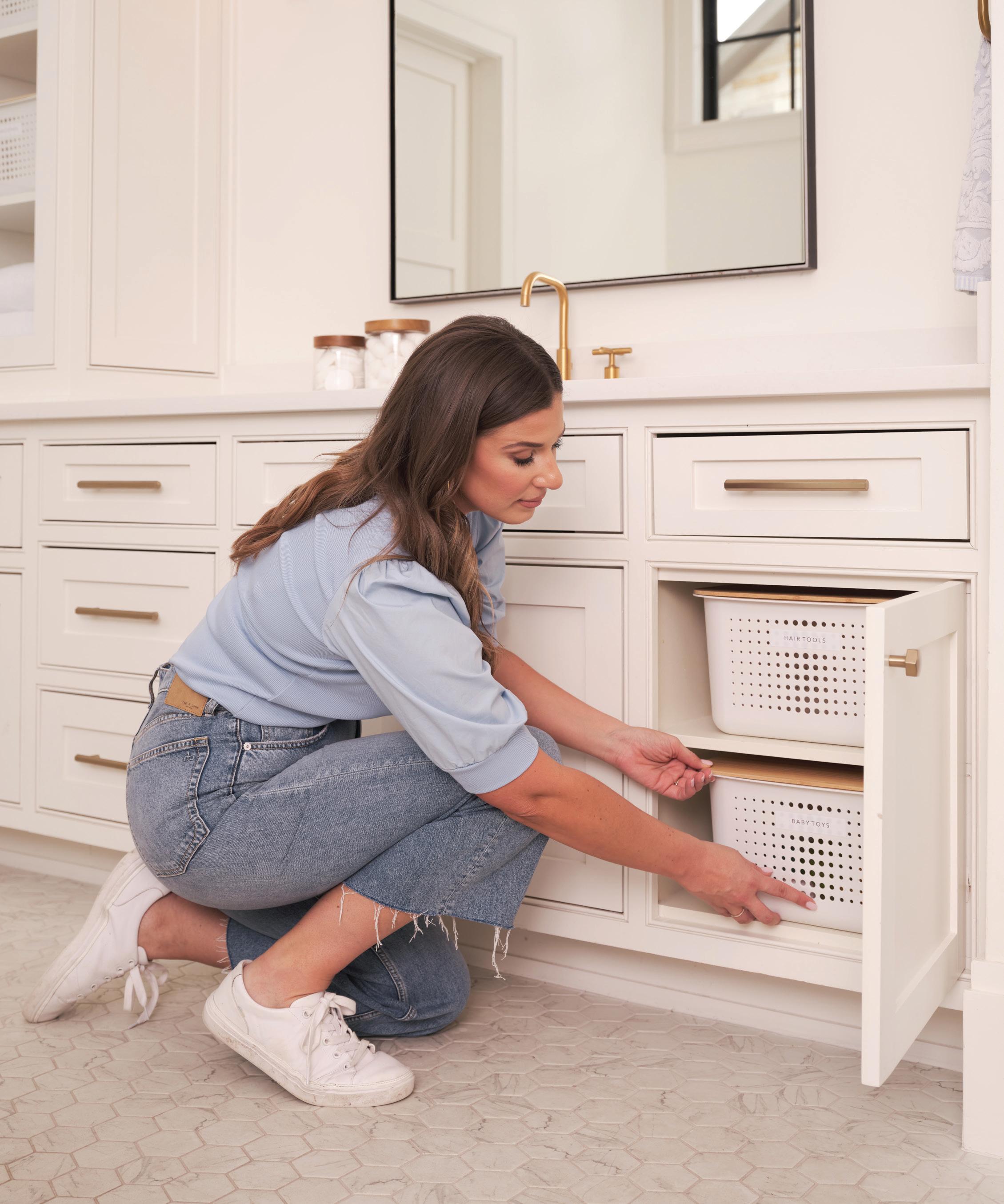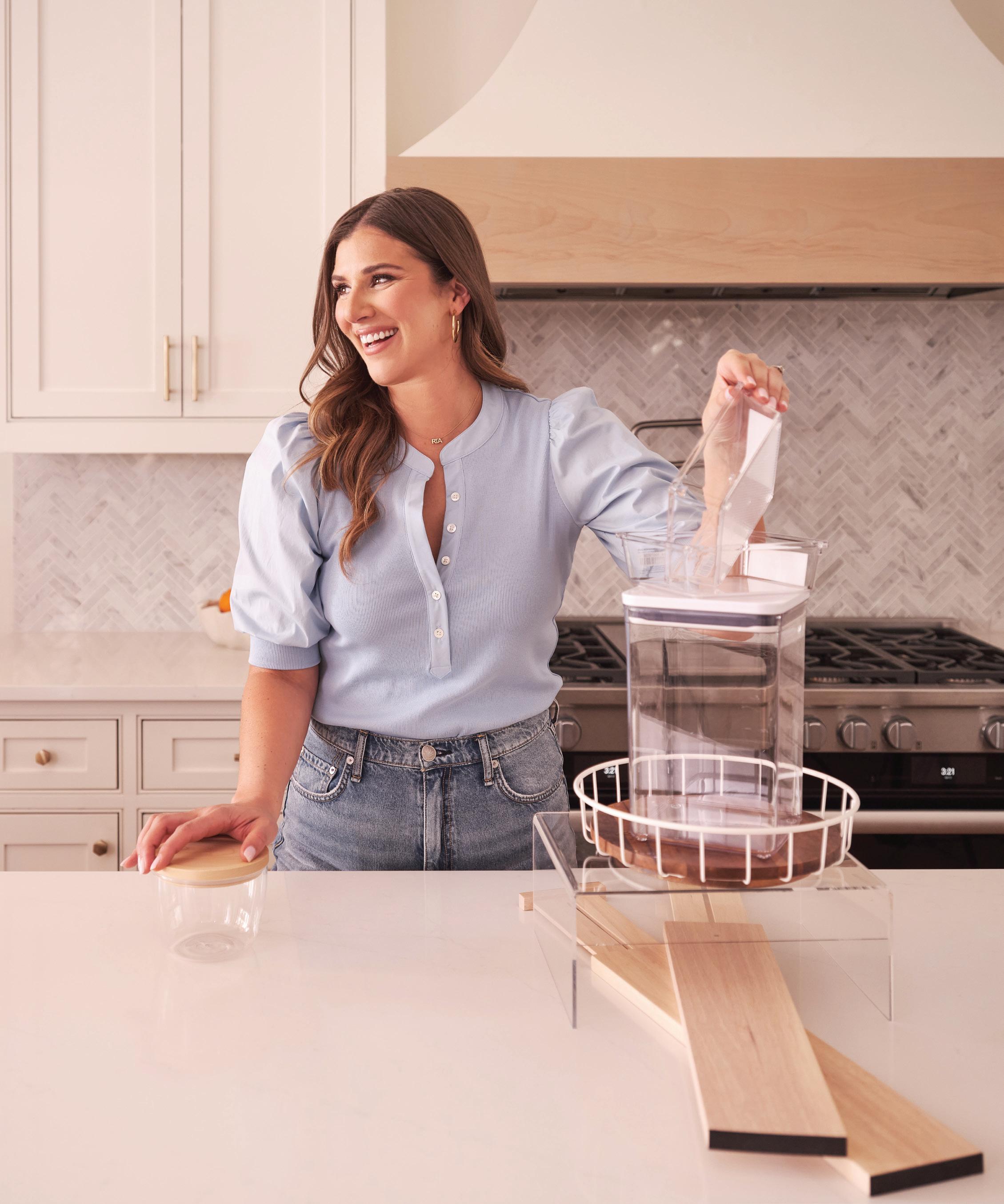
8 minute read
Getting Your Mind Right & Making The Time
from Organized New Parent
by paigetate
Parenting an infant or a young toddler is one of the most challenging stages in life. Many of us are sleep-deprived, our time and energy stretched too thin—all while trying to show up as the best version of ourselves for our children, our partners, our other family members, our friends, and our jobs. At first, it might seem hard or even ridiculous to prioritize organizing our homes when we’re overwhelmed by all the things we have to do just to get through each day. If you feel that way, you are not alone, and I hear you.
The strategies in this book are comprehensive and universal, but most importantly they are flexible and adaptable to you and your lifestyle—before or after you bring a newborn home. You don’t need to commit to organizing your entire house to reap the benefits; anything you can do to chip away at creating order and calm out of havoc will make your life easier. When we live in calm, organized environments, we are calmer parents who are more freed up to make guilt-free memories with our new or growing families. Keep that in mind as you read on, especially if you begin to feel overwhelmed by the mounds of clutter to sort through. Whatever you can do, whenever you can do it, is enough.
Get into the Mindset
First things first, your mind is your most powerful tool. Framing things in the right way can make all the difference. So, it’s time to get into the organizing mindset, which means embracing the experience ahead. At times, you might feel overloaded by the mountain of to-do lists already on your plate and want to give up. In these moments, it’s helpful to recall why becoming an organized parent will make your life so much easier: The more organized you are as a parent, the more time you will have for things that truly matter.
You’ll have more energy to get things done and to create the home you want to live in. A calm retreat from the mayhem of the world? A bright, fun-filled pad where you can easily host friends and family at the drop of a text? It’s all achievable—even as parents of young children—starting from scratch. Your mindset and attitude will determine the success of this undertaking. For sure, take that break when you need to! Just remember that bringing positivity to the areas in your life that you can control will make a huge difference.
As new parents, not only are we tired and overwhelmed, but we often feel as though we’re falling behind, or we’re worried we aren’t doing a “good enough” job. In my work with parents, I quickly learned that they didn’t need another person reaffirming what they already knew about their stresses; they needed a cheerleader, someone to re-energize them and help them see the light at the end of the tunnel. So that’s exactly what I became for them and what I want to do for you. So, whether you’re an expecting parent or you’re already wrangling a toddler, this book will support your efforts to live a calmer and more joyful life. Though it can feel daunting to take on more work, channeling the right mindset now and following through on the projects most relevant to your life will empower you to spend more time doing things you truly enjoy, like bonding with your children.
Before we get into organizing your space, we are going to organize your thoughts. Organization isn’t a copy-and-paste solution. Though the approach to organization is the same, the outcome is always different. Why? Because the variable is you. Determining your goals and your why from the outset not only keeps you motivated, but it also keeps you on track.
WHY AM I DOING THIS?
Start By Asking Yourself the Following Questions:
WHAT AM I HOPING TO ACHIEVE BY THE END OF THIS PROJECT?
HOW DO I WANT MY HOME TO FEEL FOR ME AND MY CHILDREN?
Everyoneʼs idea of organization is different.
WHY AM I DOING THIS?
SOME MIGHT SAY:
I don’t even know where to start with creating an organized home.
OTHERS MIGHT SAY:
I am a naturally organized person, but I don’t know how to transition my space as I grow my family.
WHAT AM I HOPING TO ACHIEVE?
SOME MIGHT SAY:
An easy-to-maintain system that grows with my family.
OTHERS MIGHT SAY:
I hope to achieve a home that can be reset quickly and efficiently.
HOW DO I WANT MY HOME TO FEEL?
SOME MIGHT SAY:
Dare I say it . . . peaceful.
OTHERS MIGHT SAY:
I want my home to feel fun and lively but stress-free.
While our organizing goals may vary, it’s important to start by grounding our expectations. There is a difference between “clean” and “functional.” There is often an even bigger difference between “stylish” and “functional.” This is where social media, for all of its benefits, can be harmful. We have been programmed to assume that when a space is sophisticated, clean, and beautiful, it must be a well-organized space. FALSE!
There is no correlation between cleanliness—or stylishness—and functionality. And functionality is the goal!
Many of the most aesthetically pleasing spaces were not designed with function in mind, and that oversight can set someone up for major stress when that initial “wow” factor wears off. In the same vein, some of the least photogenic spaces are actually some of the most functional. Organized chaos is real: some people have fantastically functional systems that may look cluttered to an outside eye. (Conner, looking at you. Clean your desk, love.) The point is, you can’t actually tell whether something is functionally organized just by looking at the space. So much of functionality comes down to the usability of the space.
Now that you know your goals, let’s think about your hurdles—or what I like to call pain points. A pain point is a broken link in your system. It is an area, habit, or visual that causes you mental or emotional pain or stress to be around or think about. Put simply, it’s what is not working in your space. Pain points can be as minor as “It takes me forever to find the right caps to my baby bottles!” to “None of my kids’ socks match.” It can be as broad as “I can never find anything!” or “The living room is constantly cluttered with toys!” Once you identify your pain points, we can begin to heal them.
Let’s pen those pain points: for your work in this book, you can keep a pen and pad on hand or use a notes app in your phone. When we write something down, especially something that carries a negative weight, it helps us air it out, release it, and accept it, which is the first step toward change. Once you can accept something as the source of your frustration, you can actually do something about it! Plus, it will be fun to look back at this list after tackling your spaces as a reminder of how far you’ve come.
Make the Time
The other component that’s just as important as your mindset is making the time. You must give yourself enough time to tackle each project. This means you’ll need to create the time if it doesn’t currently exist within your hectic schedule. I’ve learned that there is always time to be found—yes, even as a parent of little ones! First, sit down with your partner or spouse to discuss your home-organizing priorities and how you’ll support one another in those efforts. Consider taking some time at dinner every Sunday night to discuss goals for the coming week and how you’ll break those goals into manageable to-dos. You may need to make some sacrifices, but I promise, I promise, I promise it will all be worth it. The end result will be a more routine-ready space, which will actually save you tons of time in the long run.
You’re probably thinking,
“Well, how much time do I need to make, Ría?”
Great question. The amount of up-front time required depends on the space and the scope of the project within it. In an ideal world, you would have endless time to clear out your home, sending the kiddos off to Granny’s, working through one space to the next until your whole home makes Joanna Gaines envious, right? HA! Reality check! That’s not a realistic option for most of us, who have to work within the limited time constraints we have. Whether you can stop everything to do a complete home overhaul, or you plan to tackle bite-sized projects over the course of the following months (or years!), don’t worry. Both scenarios will accomplish the same goal, even if on different timelines.
Here are some questions to consider for finding the time, especially when you are the primary caregiver:
• Can I spend a few hours once a week after putting my child to bed to focus on projects?
• Can my partner and I switch off taking the kids to the park and working on our organizing project on the weekends?
• How can I use nap time to tackle these smaller organizing projects I’ve had on my mind?

TIME TIP #1
Only take on tasks that can be started and completed in one session.
What could possibly be worse than whatever pain point you already have? Let me tell you: starting to empty, sort, and categorize a space, only to stop mid-project, with clutter left, right, everywhere. If the space was under-functioning before, now it’s likely completely unusable. Rather than finding yourself in this frustrating limbo, consider what your schedule allows you to accomplish, then tackle a space or project that you can complete within that window of time.
If you only have an hour, don’t tackle the entire pantry; instead, consider setting up a drawer for baby bottles and pump parts or organize the pajamas in your child’s dresser. Whatever project you decide to take on, make sure you give yourself enough time to complete it!
TIME TIP #2
Get a feel for the pace at which you work.
Start with a small but contained space, like your essentials drawer. “Ría, my what?” Oh, I am so glad you asked! I’m referring to what most of you call your “junk drawer.” Because intention and attitude are a huge part of how we perceive our space and our lives, if we call something a “junk” drawer, we’re likely to fill it with junk! But who needs junk? If we shift our perspective and call it what that drawer should be, an “essentials” drawer, then you’ll end up using it for essentials.
Starting with a small space that contains a finite project, you’ll get a sense for how quickly you work when organizing something from start to finish. Some people go at rapid speed, never stopping to think—they just want it DONE. Others take their time, considering each object (maybe feeling torn about what to keep and what to toss). We all go at our own pace. Use this as your trial run to better plan out the time you’ll need for other projects in the future.
Another reason to start small? Small victories, one after the other, help us build up confidence. Positive results beget more positive results. This is the snowball effect for organizing. Pile up those small victories, and you will be amazed at how big of an impact you’ve already had on organizing your home.




